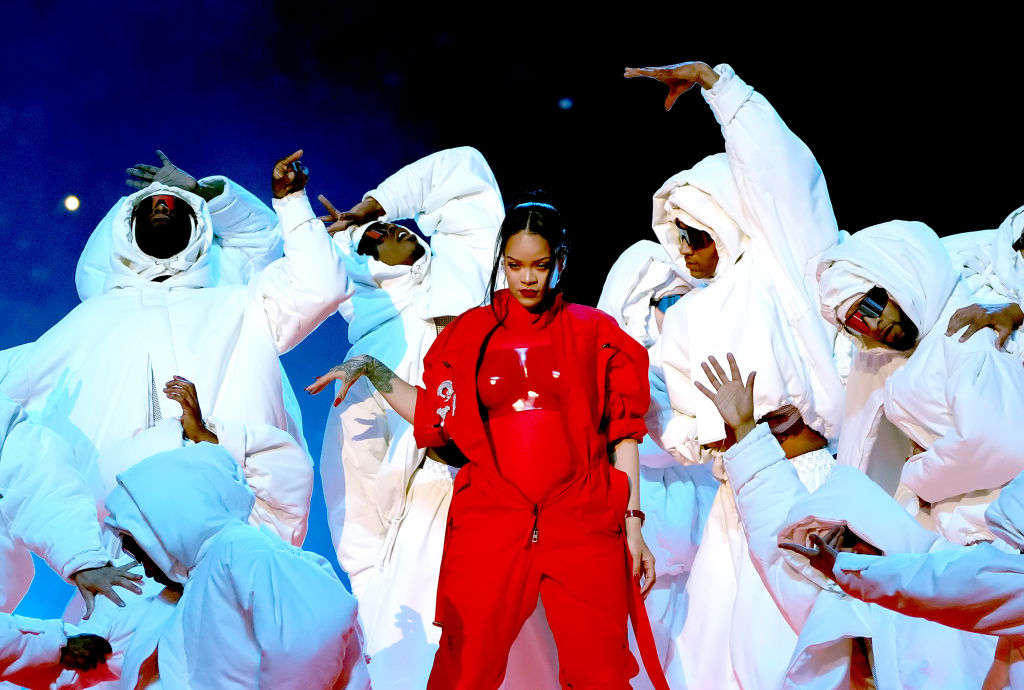The NFL doesn’t pay its Super Bowl halftime performers. It doesn’t have to. “Paid with exposure” has become a bitter cliche in the creative industry, but when you’re talking about the 113 million live audience a Super Bowl offers, it’s nothing but the truth.
For the second year running, the halftime show performer was already a billionaire and a successful businessperson with a brand of their own to spotlight. Rihanna and her Fenty Beauty cosmetics brand followed Dr. Dre, whose billionaire status was sealed by his 2014 sale of Beats By Dre to Apple. Neither performer played the Super Bowl to promote new music – Rihanna fans are still waiting for the follow-up to 2015’s “Anti” album.
So the business benefit for Rihanna from the Super Bowl isn’t a big personal payout or a chance to promote a new record. It’s a pure branding move, refreshing her own fame as a celebrity and building her Fenty brand. How successful was she?
Audience verdict: Good, but not Dr. Dre’s good
At System1, we tested the Rihanna halftime show as we would any other long-form creative – measuring overall emotional response and moment-to-moment changes in reaction, and ending up with a Star Rating – a 1 to 5-star score which measures the potential for business impact of creative work. We compared it to test results for the 2022 Dr. Dre show as well as to the other ads aired in the 2022 game. And we looked at a digital ad for Fenty Beauty which ran on Instagram and Tiktok pre-game too.
Rihanna’s halftime show scored a 3.2-Star rating – a good score, which would place it slightly above the 3-star average for Super Bowl ads. It’s a dip on Dre’s 2022 performance, though, which scored 3.9-stars.
If we look deeper into the data, we can see what drove that difference: 40% of viewers felt happiness after Rihanna’s show, a drop from the 52% who felt that way after Dre’s. Instead, 20% of Rihanna viewers felt surprise, almost double the 12% of surprised Dre viewers.
Surprise is a positive brand emotion – it shows people are paying attention and that the creative is cutting through. But happiness is more important, and the rise in surprise can’t offset that dip in happiness for Rihanna’s performance.
Audiences liked the surprise but missed nostalgia
So why was Rihanna’s show more surprising and less happy?
The surprise factor is easy – Rihanna’s performance doubled as an announcement of her second pregnancy, a visual shock that set social media ablaze and is reflected in our results. The comments that referred to the pregnancy were positive and supportive – the “special guest in her tummy” as one viewer put it. But it definitely led to that spike in surprised response.
What about the fall in happiness? It’s not down to anything bad Rihanna did. There are always negative responses from a disgruntled minority, which was true for both Dre and Rihanna – in the younger star’s case, some viewers were angry about an apparent crotch grab move in the song “Rude Boy.”
But the fall in happiness likely comes from what Rihanna didn’t do, not what she did. Comments on the Dre performance show happiness was driven by the nostalgia factor – Dre led a celebration of not just his career but of the 30 years of rap history it’s spanned, and audiences loved that.
But with Rihanna the nostalgia factor was absent. Of course, she’s a more recent star, with less than 20 years of hits to draw on. Even so, her set went big on her 2010s hits with several 2000s smashes like “Don’t Stop The Music” and “Pon De Replay” absent. On a night with plenty of nostalgic ads and callbacks to old media, that nostalgia factor might have helped Rihanna’s reception.
Did Fenty make the most of the spotlight?
One of Rihanna’s onstage moves was to pause and touch up her make-up – seen as a nod to her Fenty brand. She also ran a digital ad beforehand, brushing up footballs with her cosmetics. It was prominent on social platforms like TikTok, but tested poorly – it only got a 1.2-star for its slick but emotionally empty visual approach.
This doesn’t mean Fenty or Rihanna had a bad night. Far from it – reports claimed searches for Fenty were up 883% after the Super Bowl and Forbes reported that the “touch-up” moment was worth over $5 million in media impact just in the first 12 hours.
But a stronger Fenty creative would only have boosted those numbers (for the same media spend).
Verdict: win-win but …
Put our data together with these other results and it’s clear that Rihanna’s halftime performance was a win for her and her brand, as well as giving Super Bowl viewers some quality entertainment.
It underlines that it’s very difficult to go wrong with an audience this huge. Broad-reach media on this scale is extremely rare and immensely valuable – that’s why Super Bowl ads cost so much. Barring a genuine major controversy, like Justin Timberland accidentally exposing Janet Jackson’s nipple on stage, a performance will always do a star or a brand good.
Rihanna’s show scored well and boosted her and her business – the only question is whether different creative choices could have magnified that affect even more. A more nostalgia-driven song selection might have fitted the audience better, and a stronger digital creative would have helped Fenty more.
Jon Evans is chief customer officer for System1.
If you like this article, sign up for the SmartBrief on Social Business email newsletter for free.
